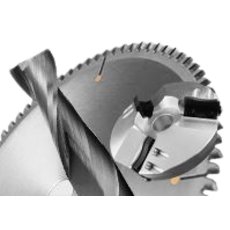
The Benefits of Sharpening Woodworking and Metalworking Tools vs. Replacing Them
In both woodworking and metalworking, sharp tools are essential for achieving precision and efficiency. However, with regular use, even the finest tools inevitably become dull. At that point, many craftsmen face a crucial decision: should they sharpen their tools or replace them entirely? While replacing tools might seem like a quick fix, sharpening offers numerous benefits that are both economical and practical.
1. Cost Efficiency
One of the most significant advantages of sharpening tools rather than replacing them is cost savings. Quality woodworking and metalworking tools are often a significant investment, especially if they are specialized or made from premium materials. Replacing a dull blade, chisel, or bit every time it loses its edge can quickly become expensive. Sharpening, on the other hand, is a cost-effective solution. By regularly maintaining the cutting edges of your tools, you can extend their lifespan and get more value out of your initial investment.
Many sharpening tools and services are available at a fraction of the cost of new tools, making it a wise choice for both professional craftsmen and hobbyists.
2. Improved Performance
Sharp tools perform better, plain and simple. Dull blades lead to rougher cuts, uneven surfaces, and slower progress. In woodworking, a dull chisel can tear through wood fibers, resulting in splinters or imperfect joints. In metalworking, a dull blade can struggle to cut through material, causing excess heat and potentially damaging the workpiece. Regular sharpening restores the original cutting performance of your tools, ensuring clean, precise cuts with minimal effort.
When tools are sharp, they require less force to operate, reducing fatigue and improving overall workflow. This means faster project completion and higher-quality results.
3. Extended Tool Lifespan
Replacing tools every time they dull leads to more frequent disposal and contributes to unnecessary waste. By sharpening, you can significantly extend the life of your tools, reducing the need for constant replacements. Many high-quality woodworking and metalworking tools are designed to be sharpened multiple times without losing their structural integrity or effectiveness.
This longer lifespan not only saves money but also reduces the environmental impact of discarding tools that could otherwise be refurbished and reused.
4. Better Control and Safety
Dull tools are more dangerous than sharp ones. When a tool loses its edge, it requires more force to cut, increasing the risk of slips, accidents, or injuries. For example, a dull saw blade is more likely to kick back, and a dull knife may slip out of control. Sharpened tools cut cleanly and effortlessly, allowing for better control during use. This enhances both accuracy and safety, as the operator can work with confidence, knowing the tool will perform as expected.
5. Time Savings in the Long Run
While sharpening may take time, it is often quicker than shopping for and waiting on replacement tools. Regular maintenance means less downtime spent trying to work with inefficient, dull tools or finding replacements. Over time, the cumulative time saved by sharpening outweighs the periodic need to sharpen your tools. Plus, keeping a cycle of tools being maintained through professional sharpening services ensures that you can maintain a steady workflow without disruptions.
6. Environmental Benefits
Sharpening tools is an eco-friendly practice. Every time you replace a tool, you're contributing to manufacturing demand, which has its own environmental footprint in terms of resource extraction, production energy, and transportation. By sharpening, you help reduce this demand and minimize waste, contributing to more sustainable work practices.
Additionally, sharpening typically involves fewer raw materials and energy consumption compared to manufacturing new tools, making it the greener option.
7. Preservation of High-Quality Tools
Many experienced craftsmen develop a preference for certain tools that have been carefully selected or customized over the years. High-quality tools, often handed down from one generation to another, hold sentimental and practical value. Rather than replacing these well-loved tools with new ones, sharpening allows you to preserve their integrity and performance. For professionals and hobbyists alike, the connection to a trusted tool is part of the crafting experience, and sharpening keeps that relationship intact.
8. Repair Instead of Replace
Some tools, such as carbide tipped saw blades, shaper cutters and router bits can often have the carbide tips replaced when they are broken or chipped for far less that replacing the entire tool. When tips are replaced they are reground to match exactly with the existing teeth ensuring proper functioning of the cutting tool and the best possible cut quality.
Conclusion
Sharpening woodworking and metalworking tools offers numerous benefits, from cost savings and improved performance to enhanced safety and environmental sustainability. By regularly maintaining your tools, you can extend their lifespan, reduce waste, and maintain the high level of precision needed for quality craftsmanship. While replacing dull tools may seem convenient, the long-term value of sharpening is undeniable for anyone serious about their craft. Investing in properly sharpened and maintained tools is an essential part of being a skilled and resourceful craftsman.
Sharpen My Tools Now!
Robert McDonald has been in the tool sharpening business for over 30 years and has extensive knowlege in both woodworking and metalworking tool sharpening

 Posted by
Posted by

